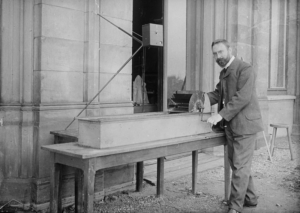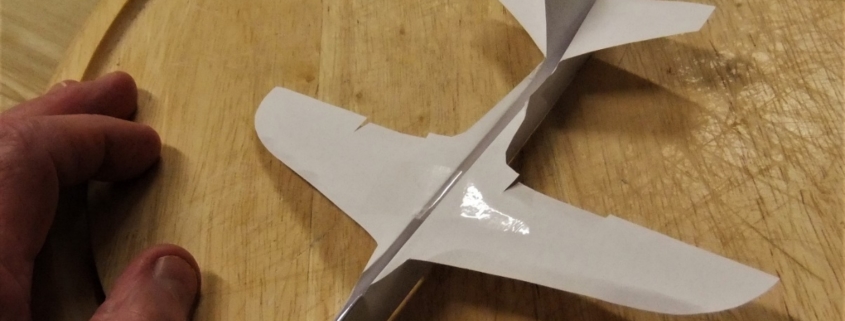Ludwig Prandtl 1875-1953 – The man behind the science of aerodynamics
Article by Dr Fred Starr PhD, FIMMM, FIE, MIMechE, CEng

Ludwig Prandtl is shown next to the water channel which he used in his early boundary layer investigations.
Ever wondered why you have to brush the dust off a piece of furniture? Not being able to blow it away? And were you puzzled that golf balls are knobbly rather than smooth? Surely a smoother ball should be more streamlined, and fly further? Or when boarding a jumbo jet, asked yourself why do the wings have to be so long, almost to the point of being floppy? Wouldn’t square shaped wings, attached along the length of the fuselage, be more sturdy?
The man who supplied us with the answer to these questions, the last one, being at one time a state secret, was Ludwig Prandtl, the greatest of all German Aeronautical Scientists. And a great bunch they were. Prandtl was there at the start of the business, when, although Lilienthal had died in his glider experiments, and the Wright Brothers had flown, there was no clear idea what kept an aircraft in the air. No one, in fact, had any idea, how best to design the most important attribute of an aircraft, the wings.


